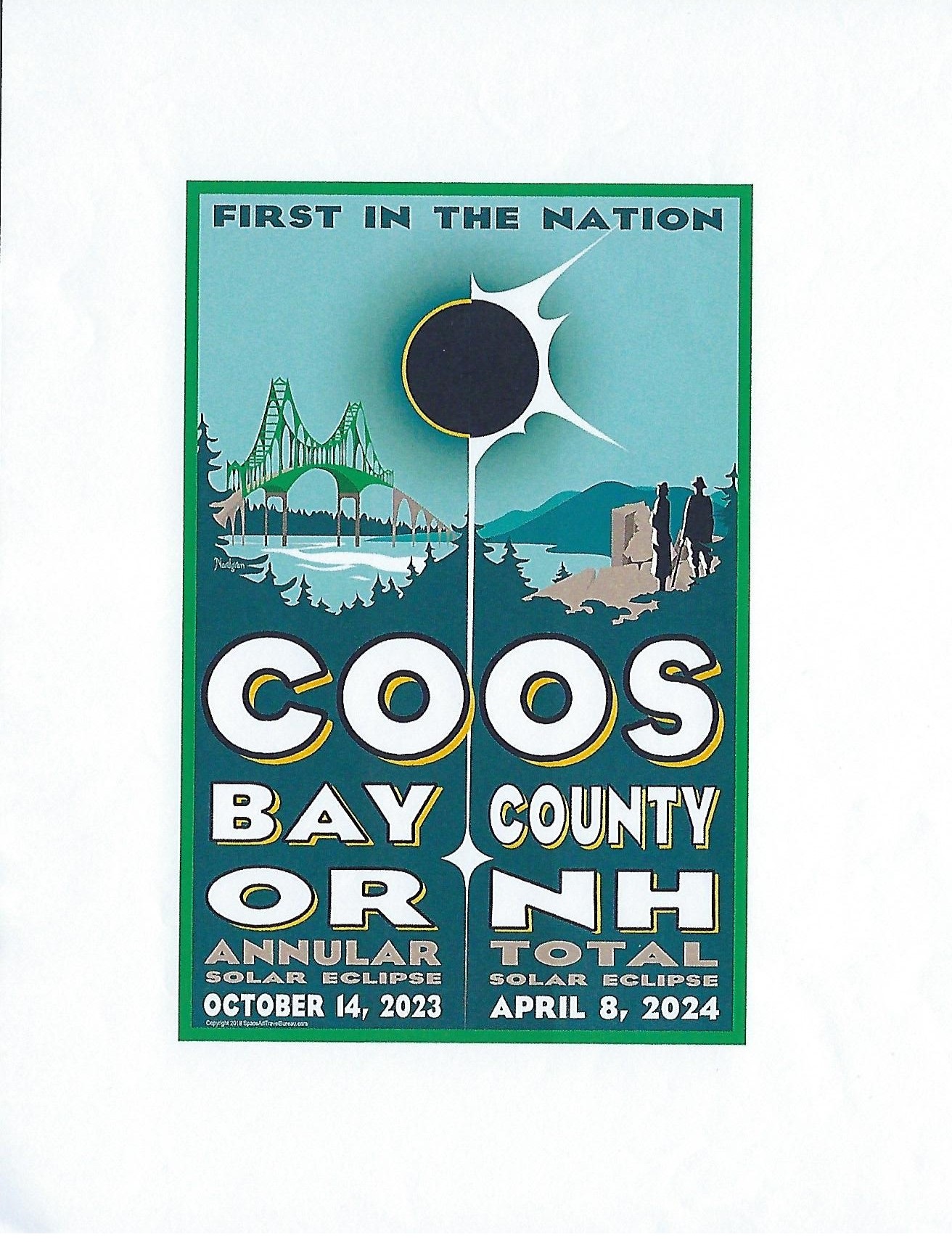I know what I’m doing 1,869 days from now. Do you?
I’ll be watching the full solar eclipse in Littleton or thereabouts. If you want to be there, too, don’t wait too long to do your planning.
“By the time you’re down to a year, or a few months, it’s too late – everybody’s already got plans, they’re all set,” is how Rik Yeames puts it.
Yeames is a Concord resident who has the most impact on your life from owning Domino’s pizza franchises in the area, but he’s got a new target for making an impact: April 8, 2024. That’s when the shadow of a full solar eclipse will sweep directly across Coos County.
Yeames, a member of the New Hampshire Astronomical Society, is one of the driving forces behind the New Hampshire Solar Eclipse Task Force. That loose group wants to make sure we take maximum advantage of this geographic event.
Why such excitement? Just remember August 2017 when we had a pretty good look at a previous solar eclipse.
It was great. We gathered in happy crowds and we shared stories and we put special boxes on our head so we could indirectly see the moon block the sun. It was the sort of community-wide, gleeful celebration that rarely occurs anymore.
But we in New Hampshire only saw 62 percent coverage then! We’ll see 100 percent coverage in five years, which is an exponentially more interesting event.
“It’s the difference between a lightning bug and lightning,” is how it was described by Yeames, who traveled out to see the 2017 eclipse in totality. “We have a Super Bowl coming to our back yard, and we don’t have to build a $200 million stadium to take advantage of it!”
The Task Force began its celebration with a “First In The Nation” Total Solar Eclipse Campaign last October, celebrating an ecliptic connection between our Coos County and Coos County in Oregon.
The connection is a little strained because (a) our county is pronounced “ koe-ahs” and sometimes spelled with umlauts, those little dots over the second “o”, while the Oregon county is pronounced “kooss” and never spelled with umlauts; and (b) Oregon won’t actually see the 2024 total eclipse. Instead, Oregon will be the first place in the continental U.S. that will see a different solar eclipse – annular rather than total – six months prior, on Oct. 14, 2023.
That’s good enough for Yeames.
“We’re going to connect up with science teachers and cities, up and down the path of annular and totality,” he said.
The task force has five similar campaigns in the pipeline that it plans to launch on April 8, exactly five years before our eclipse. They include Texas, Arkansas, Illinois, communities around Lake Erie and Lake Ontario, up through New England into New Brunswick, Canada.
It’s going to be a continental eclipse-a-palooza! You heard it here first, folks. And I’ll be sure you hear a lot more in years to come.
An annular eclipse, by the way, is when the moon almost but not quite covers the entire sun. It happens when the moon’s elliptical orbit has taken it too far away from the Earth, making it appear slightly smaller than the sun as viewed from the ground. When it occurs, the moon leaves a very thin ring of light all the way around the sun. That’s pretty cool – but not quite as cool as a total eclipse.
This is a good moment to celebrate the incredible coincidence that here on Earth the apparent size of our moon, a small rocky planet, is exactly the same as the apparent sun of our sun, a monstrously huge ball of flaming gas.
There’s no reason for this to be true. If we lived on Mars, for example, we’d never see a total eclipse: Even the larger of its two moons, Phobos, isn’t big enough to appear to cover the whole sun. It’s just a happy fact of life on Earth.
No wonder I’m planning to celebrate: These days we need all the happy facts we can get!



 Return to the Concord Monitor
Return to the Concord Monitor
Re: “incredible coincidence”. A few years back, I read “The Privileged Planet” by Guillermo Gonzalez, a book-length argument for Intelligent Design. (Website: https://privilegedplanet.com/) One of his points was the existence of “perfect” eclipses. Because, really, what are the odds?